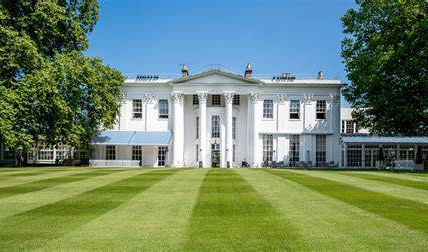William Shakespeare, often hailed as one of the greatest writers in the English language, remains an enigmatic figure in many ways. His personal life, in particular, has sparked significant debate and speculation. One of the most intriguing questions surrounding Shakespeare is whether he was gay. This article delves into the available evidence and theories on Shakespeare’s sexuality, exploring historical context, literary analysis, and modern interpretations.
Historical Context of Shakespeare’s Time
To understand the question of Shakespeare’s sexuality, it’s essential to consider the historical and cultural context of Elizabethan England. During Shakespeare’s lifetime 1564 -1616, attitudes toward homosexuality were markedly different from today. Homosexual acts were illegal and considered sinful under both secular and religious laws.
In Elizabethan England, the legal and social penalties for homosexual behavior were severe. The Buggery Act of 1533, which predated Shakespeare’s birth, criminalized sodomy, and it was punishable by death. As a result, any discussion of sexuality was often coded or veiled in literature and correspondence.
The Evidence from Shakespeare’s Works
One of the primary sources of speculation about Shakespeare’s sexuality comes from his sonnets, particularly those addressed to a “fair youth.” The collection of 154 sonnets, published in 1609, includes several poems that express deep affection and admiration for a young man. Sonnet 18, one of the most famous, begins with “Shall I compare thee to a summer’s day?”
Scholars have debated whether these sonnets reflect a romantic or platonic relationship. Some argue that the language used in these poems indicates a deep, possibly romantic, affection. For example, Sonnet 20 describes the young man as having a “woman’s face,” suggesting a unique and intimate connection.
The Dark Lady Sonnets
In contrast, the “Dark Lady” sonnets in the same collection focus on a woman who is the object of Shakespeare’s desire. These sonnets reveal a complex and tumultuous relationship, adding another layer to the interpretation of Shakespeare’s sexuality.
The juxtaposition of these sonnets one set of poems expressing affection for a young man and another for a woman has led to various interpretations. Some scholars believe that Shakespeare’s relationships were fluid and not confined to modern definitions of sexuality.
Historical Records and Personal Life
Shakespeare married Anne Hathaway in 1582, when he was 18 years old, and they had three children together. The fact of his marriage and family life has been used by some to argue against the idea of Shakespeare being gay. However, it is also possible that his marriage was more a social and economic arrangement than a reflection of his sexual preferences.
Contemporary Accounts
Historical records provide limited information about Shakespeare’s personal life. Most of what is known comes from legal documents and church records. There is no direct evidence from his lifetime that explicitly addresses his sexuality, and much of the speculation is based on interpretation rather than fact.
Theories and Interpretations
Various scholars have proposed theories about Shakespeare’s sexuality based on literary analysis and historical context. Some argue that Shakespeare’s sonnets reflect a genuine romantic attachment to the young man, while others suggest that the poems might have been a literary convention of the time, reflecting idealized and non-sexual affection.
Modern Interpretations
In recent years, the discussion about Shakespeare’s sexuality has been influenced by modern understandings of sexuality and identity. Some contemporary scholars and critics argue that trying to label Shakespeare’s sexuality using today’s categories is anachronistic. They suggest that Shakespeare’s work reflects a fluidity of identity that was not confined by modern concepts of sexual orientation.
Influence of Queer Theory
Queer theory, which emerged in the late 20th century, has provided new ways of interpreting historical figures like Shakespeare. This approach emphasizes the fluidity of sexual and gender identities and challenges the application of rigid categories to historical figures. From this perspective, Shakespeare’s writings are seen as exploring a spectrum of human experiences rather than adhering to specific labels.
FAQs
Could Shakespeare have been bisexual?
It’s possible that Shakespeare experienced both heterosexual and homosexual attractions. The concept of bisexuality was not widely understood in his time, but it’s a possibility that modern scholars consider.
What do modern scholars think about Shakespeare’s sexuality?
There is no consensus among scholars. Some believe Shakespeare was gay or bisexual based on the evidence in his works, while others maintain he was heterosexual. Many scholars emphasize the complexity of the issue and the limitations of our knowledge.
Does it matter if Shakespeare was gay or straight?
Ultimately, whether Shakespeare was gay, straight, or bisexual doesn’t change the brilliance of his work. His plays and poems continue to resonate with audiences of all sexual orientations.
Conclusion
The question of whether William Shakespeare was gay remains unresolved, largely due to the lack of concrete evidence and the limitations of historical context. While his sonnets and other writings suggest a complex understanding of affection and desire, interpreting these works through modern lenses can be problematic.
Ultimately, Shakespeare’s sexuality may not fit neatly into contemporary categories, and his works should be appreciated for their artistic and emotional depth rather than solely through the lens of his personal life. As with many historical figures, the true nature of Shakespeare’s sexuality may remain one of life’s great mysteries, but it also serves as a reminder of the richness and complexity of human experience.
To read more, Click Here .



